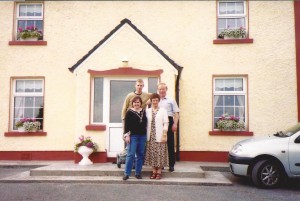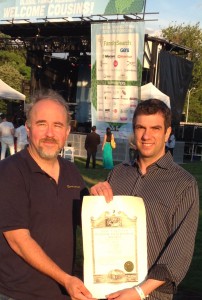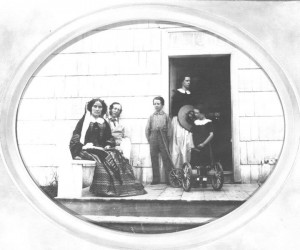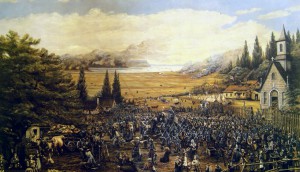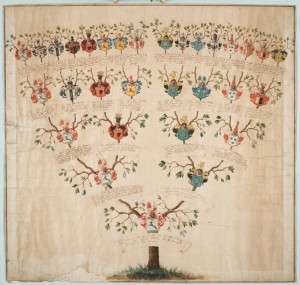
When researching a family name, one of the elements that most researchers seek is the family’s “coat of arms.” While the term coat of arms is often used to describe the inherited emblem of a family awarded to ancestors and carried on by descendants, this term only refers to the design on the shield (known as an Escutcheon). The complete display of heraldic components is known as a heraldic achievement.
The first detected use of a heraldic symbol appeared in 1127, when King Henry I of England knighted his son-in-law Geoffrey V, Count of Anjou. Upon knighting Geoffrey V, contemporary accounts record that Henry I placed a shield painted with golden lions on Geoffrey’s neck.[1] In 1484, King Richard III established the College of Arms, which still operates today, to act as an authority in the awarding of arms.[2] Continue reading Heraldry and coats of arms

